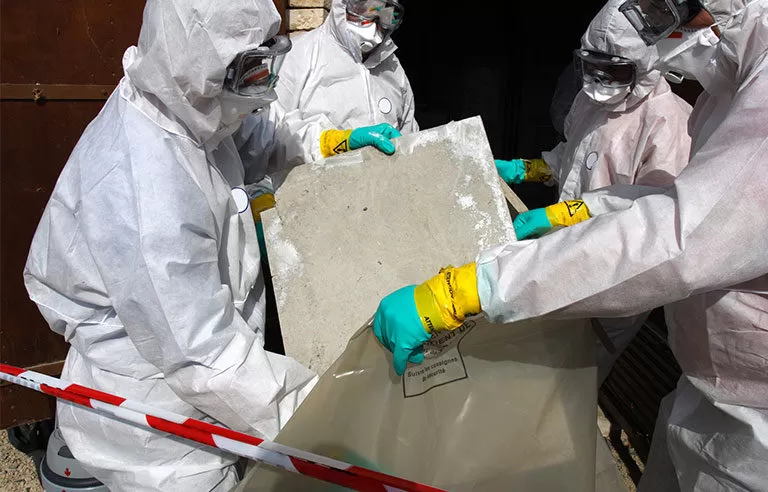Mesothelioma, a rare and aggressive form of cancer, has become a growing concern due to its strong association with environmental exposure to asbestos. Despite stringent regulations, the risk of mesothelioma persists in certain occupations and industries where asbestos is still used or where past exposure has left a lasting impact. In this blog post, we will delve into the details of mesothelioma and its connection to environmental exposure, understanding the risks associated with this deadly disease.
Understanding Mesothelioma
Mesothelioma is a malignant tumor that develops in the mesothelial cells lining the lungs, abdomen, or heart. It is primarily caused by inhaling or ingesting asbestos fibers, which become lodged in the body tissues and lead to cellular damage and inflammation. The latency period for mesothelioma can be exceptionally long, often taking 20 to 50 years or more to manifest symptoms, making early detection challenging.
The Link Between Asbestos and Mesothelioma
Asbestos is a naturally occurring mineral known for its exceptional heat resistance and insulating properties. Consequently, it was widely used in various industries, including construction, shipbuilding, automotive, and manufacturing, from the early 20th century until the late 1970s when regulations began to limit its use. Unfortunately, the consequences of past asbestos exposure still linger, as the mineral is still found in older buildings, ships, and other structures.
The most significant risk of mesothelioma arises from occupational exposure to asbestos. Workers in construction, demolition, insulation, and asbestos manufacturing are at heightened risk, as are those in power plants and shipyards. Additionally, secondary exposure can occur when family members are inadvertently exposed to asbestos fibers carried home on the clothes of workers.
Environmental Exposure to Asbestos
Apart from occupational exposure, environmental exposure to asbestos remains a concerning issue. Naturally occurring asbestos deposits can release microscopic fibers into the air and soil, putting nearby communities at risk. Regions with geological formations containing asbestos are particularly vulnerable. Residents living near asbestos mines, quarries, or construction sites involving asbestos-containing materials face a higher risk of exposure.
Asbestos in Buildings and Homes
Many older buildings still contain asbestos-containing materials (ACMs) used in construction and insulation. As these materials age or get disturbed during renovations or demolitions, they release asbestos fibers into the air. Schools, homes, and public buildings erected before the 1980s are likely to have asbestos components.
Proper management and removal of asbestos are crucial to minimizing environmental exposure risks. When left undisturbed, undamaged asbestos is less likely to pose an immediate threat. However, routine inspections and necessary precautions are essential to prevent accidental exposure.
Regulatory Measures and Health Impact
In response to the growing awareness of the health hazards associated with asbestos, numerous countries have enacted regulations to control its use and promote safety. However, in regions where these regulations are not strictly enforced or where asbestos is still used, the risk of mesothelioma remains high.
The health impact of mesothelioma is devastating. Symptoms often mimic other respiratory conditions, leading to delayed diagnoses. As the disease progresses, patients may experience difficulty breathing, chest pain, fatigue, and weight loss. Treatment options are limited, and the prognosis is generally poor, with a low survival rate beyond five years after diagnosis.
Prevention and Awareness
Prevention is the best strategy for combatting mesothelioma caused by environmental exposure. Raising awareness about the risks of asbestos and its potential presence in older buildings and homes is crucial. Proper education on handling asbestos and the importance of regular health check-ups for high-risk individuals can contribute to early detection and improved outcomes.
Mesothelioma remains a significant public health concern, with environmental exposure to asbestos being a major contributing factor. Understanding the risks associated with this aggressive cancer is essential for creating awareness, promoting safer practices, and improving preventive measures. As we continue to learn more about mesothelioma and its links to environmental exposure, safeguarding public health becomes a collective responsibility. By taking proactive steps to reduce asbestos exposure and promoting early detection, we can work towards a future where mesothelioma becomes a disease of the past.

Medical oncologist Dr. Anne Wolf is director of the Mesothelioma Program and chair of the Clinical Research Committee at the University of Texas MD Anderson Cancer Center in Houston.


I like this blog very much, Its a real nice situation to read and
obtain info.Raise your business